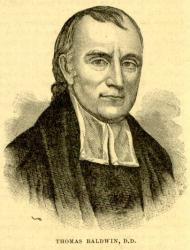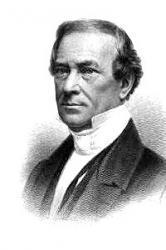Planning worship?
Check out our sister site, ZeteoSearch.org,
for 20+ additional resources related to your search.
- |
User Links
Person Results
George Kingsley
1811 - 1884 Composer of "TAPPAN" in Evangelical Lutheran hymnal Born: July 7, 1811, Northampton, Massachusetts.
Died: March 14, 1884, Northampton, Massachusetts.
Kingsley played the organ at the Old South Church and Hollis Street Church in Boston, Massachusetts. He also taught music at Girard College in Philadelphia, Pennsylvania, served as music supervisor for public schools in Philadelphia, and compiled a number of music books, including:
Sunday School Singing Book, 1832
The Harmonist, 1833
The Social Choir, 1836
The Sacred Choir, 1838
The Harp of David, 1844
The Young Ladies’ Harp, 1847
Templi Carmina (Northampton, Massachusetts: 1853)
The Juvenile Choir, 1865
--www.hymntime.com/tch
George Kingsley
William Whittingham
1524 - 1579 Author of "The Lord's my shepherd, I'll not want" in The Wesleyan Methodist Hymnal
William Whittingham
Thomas Baldwin

1753 - 1825 Author of "Come, happy souls, adore the lamb" in The Standard Church Hymnal Baldwin, Thomas. (Bozrah, Connecticut, December 23, 1753--August 29, 1825, Waterville, Maine). Following the death of his father and his mother's remarriage, he moved at age sixteen to Canaan, New Hampshire. He was married in 1775, and while a young man was elected to represent Canaan in the legislature and was repeatedly reelected. Following his conversion he was baptized in 1781. He then abandoned his legal studies and began to preach in 1782, being ordained in the following year and then serving for seven years as an evangelist. In 1790 he became pastor of the Second Baptist Church of Boston. He published a number of books and was the first editor of the Massachusetts Baptist Missionary Magazine, beginning in 1803. For many years he was chosen chaplain of the General Court of Massachusetts, delivering the annual sermon on the general election day in 1802. He was given the M.A. from Brown University in 1794 and the D.D. from Union College in 1803. His death occurred during a visit he made as a trustee to the annual commencement of Waterville College.
See: Chessman, Daniel. (1826). Memoir of Rev. Thomas Baldwin. (Boston).
--Harry Eskew, DNAH Archives
======================================
Baldwin, Thomas, D.D., born at Bozrah, or Norwich, Connecticut, 1753, was representative for some time of his native State in the Legislature. In 1783 he was ordained to the Baptist ministry, and from 1790 till his death, in 1825, he was Pastor of the Second Baptist Church, Boston. His best known hymns are:—
1. Almighty Saviour, here we stand. Holy Baptism. This hymn "For Immersion " was contributed to a Collection of Sacred and Devotional Hymns, Boston, 1808, from whence it has passed into later Collections, including the Baptist Praise Book, N. Y., 1871, and others.
2. From whence does this union rise? Communion of Saints. First found in J. Asplund's New Collection, Baltimore, 1793, beginning, "O whence does this union rise." Formerly very popular, and still in use as in the Baptist Hymn [and Tune] Book, Phila., 1871, No. 638. In the Church Pastorals, Boston, 1864, No. 981, it is altered to "From whence doth this union arise.”
3. Ye happy saints, the Lamb adore. Holy Baptism. For Immersion, first appeared in a Collection of Sacred and Devotional Hymns, Boston, 1808, from whence it passed in an altered form as:—"Come, happy souls, adore the Lamb," into Winchell's Supplement to Watts, 1819. It is found in Spurgeon's Our Own Hymn Book, 1866, and many modern American Baptist collections. [Rev. F. M. Bird, M.A.]
-- John Julian, Dictionary of Hymnology (1907)
============================
Thomas Baldwin
Rev. John East
1793 - 1856 Person Name: John East Author of "There is a fold whence none can stray" in Songs for the Lord's House East, John, sometime Curate of St. Michael's, Bath, and Rector of Croscombe, Somerset, pub.:—
(1) Psalmody for the Churches: A Collection of Psalms and Hymns arranged for Public Worship in the Churches and Chapels throughout the Rectory of Bath, &c, 1838. (2) The Sabbath Harp, a collection of Sacred Poetry, n.d.; and (3) My Saviour; or, Devotional Meditations in Prose and Verse, 3rd ed., 1836.
The following hymns by this author have come into common use:—
1. Come unto Me, ye weary, come. Invitation and Response. In his Sabbath Harp, n.d., in 4 stanzas of 4 lines, and signed "J. E."
2. Lord of the Soul and its light. The Light of Life. From the Sabbath Harp into a few American hymnals.
3. There is a fold whence none can stray. Heaven. In My Saviour, &c., 3rd ed.; 1836, Meditation, No. 44, in 6 stanzas of 4 lines.
4. Where is my faith if I survey! Increase of Faith, desired. Sometimes ascribed to J. East, but not traced to his works. [William T. Brooke]
-- John Julian, Dictionary of Hymnology (1907)
=================
East, J. , p. 318, i. Son of William East of St. Martin's parish, Westminster, born in 1793; St. Edmund's Hall, Ox. 1811-1816; B.A. 1816, M.A. 1819. Rector of Croscombe, Somerset. 1828; Rector of St. Michael's, Bath, 1843. He died c. 1857.
--John Julian, Dictionary of Hymnology, New Supplement (1907)
Rev. John East
N. L. Frothingham

1793 - 1870 Person Name: Rev. N. L. Frothingham Author of "O God, Whose presence Glows in All" in Sunday School Hymnal Frothingham, Nathaniel Langdon, D.D., born at Boston July 23rd, 1793, and graduated at Harvard 1811, where he was also sometime Tutor. From 1815 to 1850 he was Pastor of the First Church (Unitarian), Boston, and subsequently attended as a worshipper the church where he had been 35 years minister till his sight and strength failed him. He died April 4th, 1870.
His Metrical Pieces, in 2 volumes, were published in 1855 and 1870.
1. O God, Whose presence glows in all. Ordination. This was written in 1828 for the ordination of W. B. Lunt, New York.
2. We meditate the day . Installation. Written in 1835 for Mr. Lunt's installation at Quincy, Mass., as Co-pastor with Peter Whitney.
3. O Lord of life and truth and grace . Ordination. Also a special hymn. It was composed for the ordination of H. W. Bellowes, New York, 1839. It is found in common with Nos. 1 and 2 in Frothingham's Metrical Pieces, 1855. These Metrical Pieces are unknown to the English Collections. [Rev. F. M. Bird, M.A.]
--John Julian, Dictionary of Hymnology (1907)
================
Frothingham, N. L. , p. 400, ii. Other hymns are:—
1. O Saviour, Whose immortal word. Opening of a Place of Worship. Written "For the Dedication of the Church of the Saviour, Boston, November 16, 1847."
2. Remember Me, the Saviour said. Holy Communion.
3. They passed away from sight. Death and Burial.
4. When I am weak, I'm strong. Spiritual Strength. Nos. l, 2, and 4 are from his Metrical Pieces, Translated and Original, 1855,
--John Julian, Dictionary of Hymnology, Appendix, Part II (1907)
N. L. Frothingham


 My Starred Hymns
My Starred Hymns


